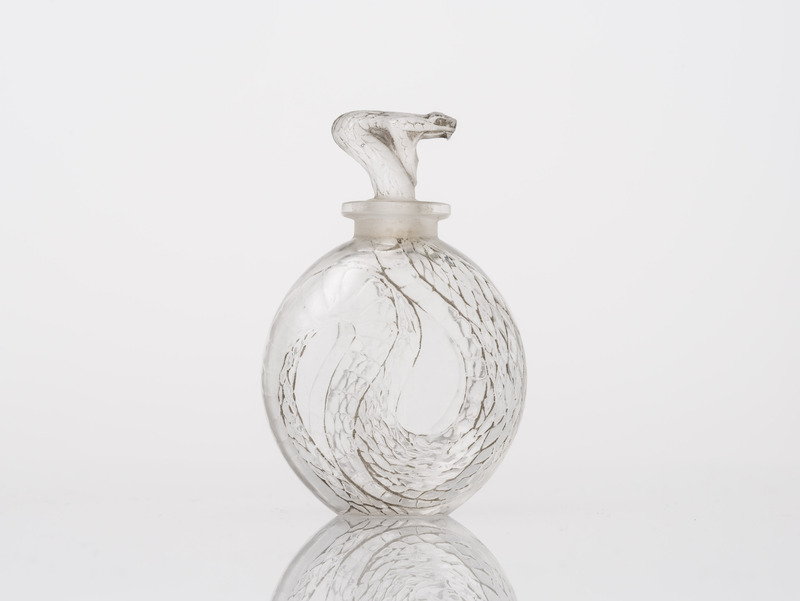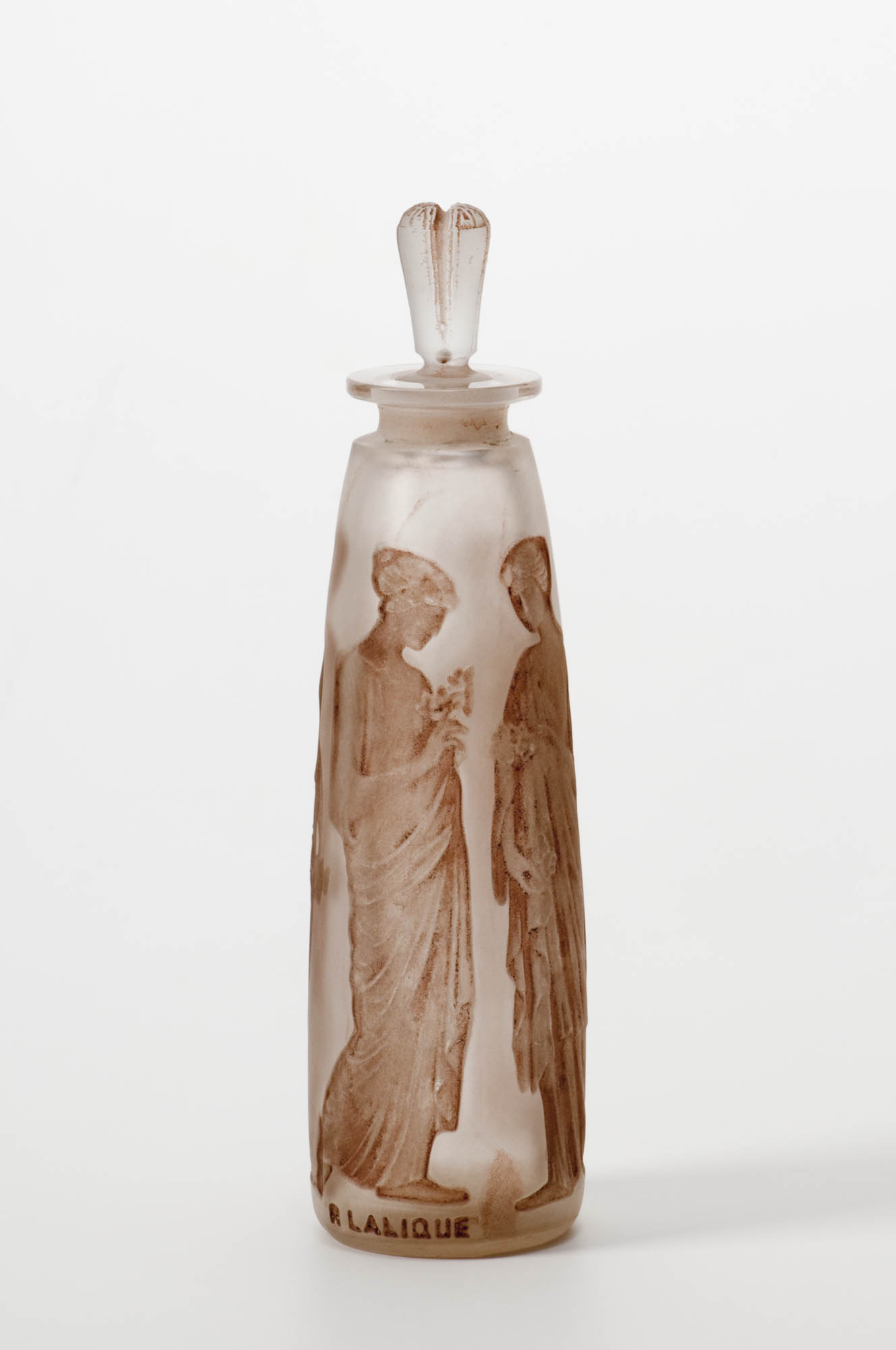8031 Zurich
8031 Zurich
8008 Zürich
The French designer René Lalique (1860–1945) is regarded as the inventor of the sculptural perfume bottle. The snake is cast here in the role of seducer in order to bring the outer form of the flacon into enchanting harmony with the fragrant contents.
Perfume as alluring accessory is embodied convincingly in this flacon through the metaphor of the sinuous snake. The highly successful bottle was made from the same plaster mold from 1920 to 1937. The snake head with wide-open jaws exudes a frisson of danger and at the same time entices the user to reach out and touch it. Lalique continued the relief ornament that adorns the front and back of the bottle onto the sculptural snake-head stopper. The decor imitates the scales of the snake’s skin while providing a more secure grip. Gray paint rubbed into the recesses of the pattern lends the necessary contrast. The inexpensive colorless glass that Lalique used in the beginning almost without exception was pressed with air here in a two-part mold to make the hollow bottle. The distinctive stopper was made of solid molded glass. A renowned jewelry designer, René Lalique first turned his attention to making utilitarian glass objects for serial production at the age of forty-seven, when he received a commission from the perfumer François Coty. Under his influence, the simple pharmacy-type bottle that had been customary for dispensing perfume took on a variety of new forms as Lalique combined the myriad motifs of the Art Nouveau style with different glass techniques. Lalique designed flacons for perfume houses including Houbigant, Guerlain, D’Orsay, and Worth. (Sabine Flaschberger)
Entwurf: René Lalique
Material/Technik: Glas, gepresst, mattgeätzt; Kaltfarbe
8.5 × 5.5 × 2.4 cm
Eigentum: Museum für Gestaltung Zürich / ZHdK
Museum Bellerive (Hg.), René Lalique, Zürich 1978.
Christie Mayer Lefkowith, L’Art de René Lalique – flacons et boîtes à poudre, New York 2010, S. 134–141.
Flakon, Modell Nr. 502: Serpent, 1920, Entwurf: René Lalique
Abbildung: Museum für Gestaltung Zürich / ZHdK
Parfumflakon, Ambre Antique, 1910, Entwurf: René Lalique
Abbildung: Museum für Gestaltung Zürich / ZHdK
Parfumflakon, La Belle Saison, 1925, Entwurf: René Lalique, Produktion: Houbigant, Paris, FR
Abbildung: Museum für Gestaltung Zürich / ZHdK
Vase, Formose, 1924, Entwurf: René Lalique
Abbildung: Museum für Gestaltung Zürich / ZHdK
Brosche, Kopf mit Flügelhaube, um 1895, Entwurf: René Lalique
Abbildung: Museum für Gestaltung Zürich / ZHdK
In the affluent Belle Époque, the perfume trade flourished as a luxury industry. The acclaimed designer René Lalique (1860–1945) replaced the customary standard bottle with cast-glass flacons featuring elaborate stoppers. Flowers refer to the floral notes of the scent within, while the snake or nighttime stars evoke erotic promise. The names, too, go beyond a mere description of the ingredients. Mitsouko conjures up images of distant lands, while Flèches d’Amour or Imprudence elicit romantic dreams. The genre is enlivened today by utilitarian objects such as Jean-Paul Gaultier’s practical can or Tom Ford’s music cassette.




















































